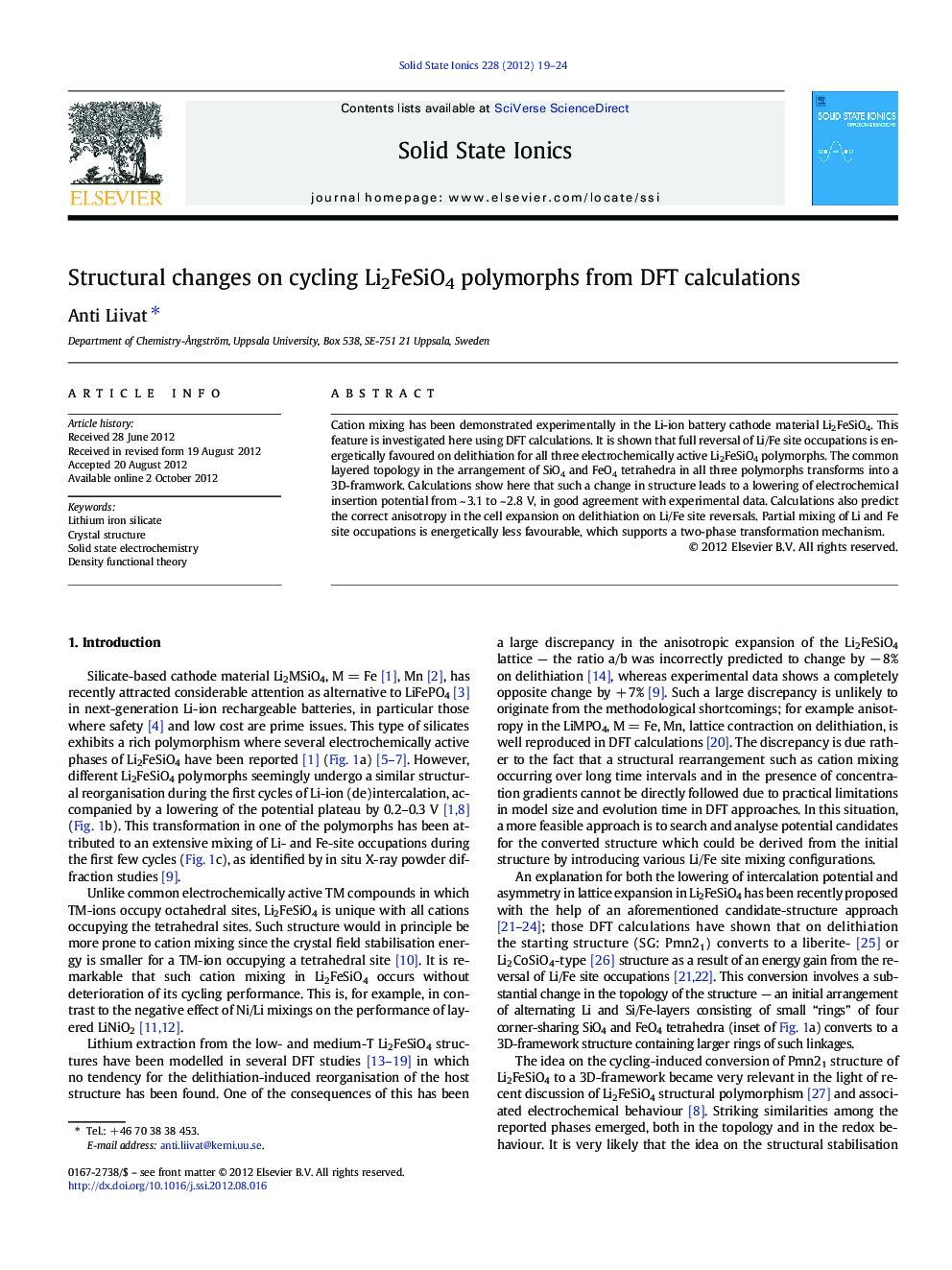| Article ID | Journal | Published Year | Pages | File Type |
|---|---|---|---|---|
| 1294174 | Solid State Ionics | 2012 | 6 Pages |
Cation mixing has been demonstrated experimentally in the Li-ion battery cathode material Li2FeSiO4. This feature is investigated here using DFT calculations. It is shown that full reversal of Li/Fe site occupations is energetically favoured on delithiation for all three electrochemically active Li2FeSiO4 polymorphs. The common layered topology in the arrangement of SiO4 and FeO4 tetrahedra in all three polymorphs transforms into a 3D-framwork. Calculations show here that such a change in structure leads to a lowering of electrochemical insertion potential from ~ 3.1 to ~ 2.8 V, in good agreement with experimental data. Calculations also predict the correct anisotropy in the cell expansion on delithiation on Li/Fe site reversals. Partial mixing of Li and Fe site occupations is energetically less favourable, which supports a two-phase transformation mechanism.
► First-cycle potential change 3.1 V→2.8 V in Li2FeSiO4 has been explained using DFT. ► All three polymorphs transform from layered to a 3D-framework structure. ► The transformation stabilises the delithiated phase through Li–Fe site reversal. ► The experimentally observed lattice anisotropy is reproduced only in 3D-fameworks.
